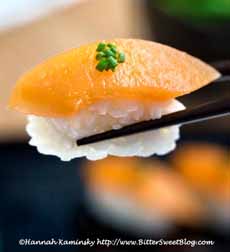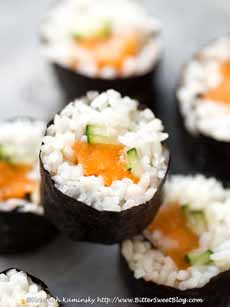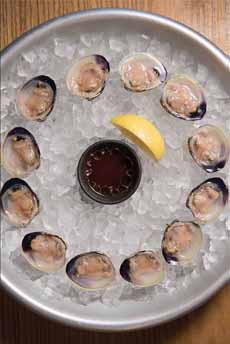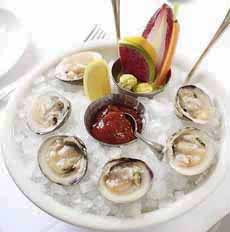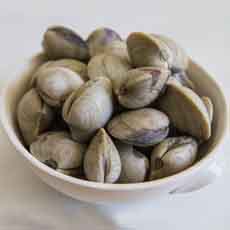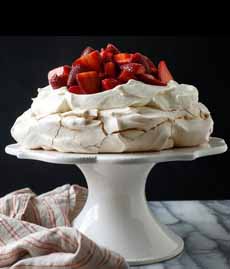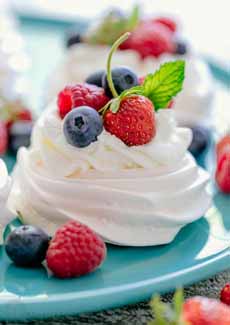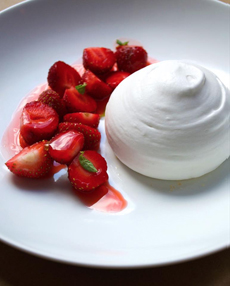|

[1] A special waffle iron makes sheets of waffle batter with egg/bubble indentations. The “eggs” can be pulled off as bites, or the entire waffle can be turned into a sundae or cone (photo courtesy Kirbie Cravings).

[2] Several egg/bubble waffle irons are available. Go for an electric version with nonstick plates. This one is from CucinaPro.

[3] Go for it: Put your favorite sundae ingredients into a Hong Kong waffle (photo courtesy CucinaPro).
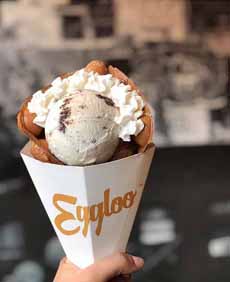
[4] Cones are also fun, but there’s nothing to stop the ice cream from dripping out, unless you provide some type of holder. Vendors use heavy paper holders, like this one at Eggloo in New York City.
|
|
If waffles and bubble wrap had a child, it would be bubble waffles, a.k.a. Hong Kong waffles or egg waffles (photo #1).
We celebrated International Waffle Day on March 26th, by purchasing a bubble waffle maker (photo #2).
It has nonstick plates and turns out large waffles in less than five minutes. We are happy.
This Hong Kong street food has other names, such as egg puffs and eggettes. You can see why: The mold creates raised egg or bubble shapes.
The mold makes the edges crispy, while the puffs are airy. While any waffle is a good waffle, this is a unique waffle experience.
The waffles are popular street food, and can be eaten plain. It’s fun to pull off an “egg,” one bite at a time.
But, it’s even more fun to turn the waffle into a sundae (photo #3) or a cone (photo #4).
WHERE CAN YOU FIND THEM?
Hong Kong waffles don’t have much traction in the U.S., yet.
You should be able to find them in your local Chinatown (one of the options in the NYC Chinatown is charmingly called Eggloo).
Trendy restaurants outside of Chinatown have discovered them. You can also find them in L.A., D.C. and elsewhere.
Cauldron Ice Cream, with three locations in Southern California, sells the ice cream cones. We hope other independents will get on the bandwagon.
Some caterers provide the waffles as a fun option for special events.
MAKE YOUR OWN HONG KONG WAFFLES
Kirbie of KirbieCravings will tell you how to make them.
Read her article and try her recipe, which comes with some excellent tips (photo #1).
Her recipe for the Hong Kong waffle ice cream cones is just as tempting.
THE HISTORY OF HONG KONG WAFFLES
Western ingredients became available in Hong Kong in the 1950s, when trade resumed post-World War II.
Given how recent that is in food history, it is surprising that there is no hard information on the origin of Hong Kong waffles. But here are some of the prevailing tales:
The waffles were created by a grocer as a way use cracked and broken eggs.
He or she created a batter that included flour, evaporated milk and custard powder (a popular British ingredient), and created a snack waffle. It became street food, cooked over an open flame by vendors in pans with egg-shaped indentations.
At some point, the familiar egg-shaped mold was invented to give the snack a more enticing appearance, and the snack became known as gai daan zai, which means “little chicken eggs” in Cantonese [source].
No one knows who invented the egg-shaped pan/waffle iron, either. The theory is that it was Hong Kong’s take on the honeycomb design of western waffle irons.
Or, perhaps someone saw a Danish aebelskiver pan, which makes large, egg-shaped pancakes.
Recipes vary, but they generally include eggs, flour, milk, and sugar, and sometimes baking powder or coconut milk.
They may become your new favorite waffle; and certainly, people will clamor for invitations to brunch at your house.
|

